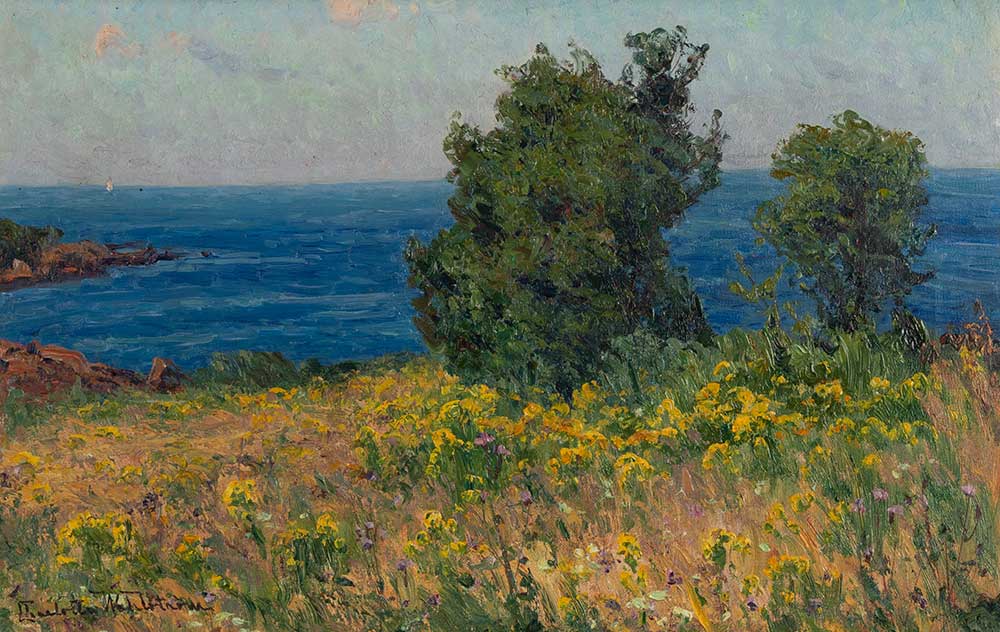Female pioneer and landscape painter
In this themed auction, Bukowskis presents some works by landscape painter Charlotte Wahlström. She was one of the female pioneers of the late 19th century who chose the artist's style. Charlotte was born in 1849 into a relatively wealthy family that was also very musical, with both the violin and piano being used in the home. Tragedy struck the family when her mother and a younger sister died when Charlotte was ten. Her father remarried but also died a few years later, and together with her stepmother and siblings, Charlotte moved around Södermanland. She soon left the family to settle in Söderhamn. Her youth was thus quite turbulent for her, but as there were financial resources, she also had the opportunity for a certain freedom to develop herself. Read more
In 1877, Charlotte applied to the School of Needlework and was accepted. Women had minimal opportunities to obtain scholarships or other financial support at that time. Still, they were admitted to certain courses, and the Academy of Fine Arts opened classes for Women in 1864. Charlotte studied at the Academy of Fine Arts between 1878 and 1883. Like many of her contemporary artist colleagues, she was very interested in landscape painting and thus chose this specialization at the Academy of Fine Arts. This genre enjoyed a great revival in the late 19th century, particularly in France, where the open-air painting of various groups of artists enormously influenced many artists in Europe. Many artists sought out France, including many Swedes. The French art scene at this time was characterised by a completely different progress and openness than was often the case in Scandinavia. The landscape as a genre, with all its challenges, was something new and exciting, unlike academic history painting or anecdotal depictions of folk life. Moreover, it was now possible to paint spontaneously and directly in front of the subject in the open air. This was made possible partly by the availability of portable, ready-mixed paint tubes that could easily be taken on a subject hunt.
Charlotte was accomplished and received a variety of awards and scholarships. In 1883, she was awarded the most prestigious award - the "Royal Medal" - and was thus able to make several trips in the following years thanks to the "prize money." Charlotte visited Germany and the Netherlands, among other places, but she stayed in France, where she painted for a while in Barbizon. Charlotte was successful in painting and a frequent exhibitor, including in the United States, where she was awarded a bronze medal at the 1911 World's Fair in St. Louis. She also received the Society of the Idun's Grand Academy Prize in the same year.
She was among the leading figures behind the 'Ten Artists' exhibition at the Academy in 1901. Other participants included Alice Nordin, Gerda Sprinchorn, Ottilia Adelborg, and Elisabeth Warling. It was something completely new that only women exhibited, and the reception was generally positive. In 1911, she helped found the "Association of Swedish Women Artists."
For most of her working life, Charlotte lived and worked at Hamngatan 13 in Stockholm, which was both her studio and her home. The studio was shared with her friend and fellow artist, Elisabeth Warling. Charlotte also hung out and worked in the circle of Anna Boberg and Hilma af Klint, and together they exhibited "suggestive landscape motifs" at the Theosophical Society.
The auction includes eight Swedish landscape paintings fairly typical of the artist's later output.
Charlotte Wahlström is an interesting representative of the women who broke new ground. From 4 March 2023, more of Charlotte's landscape paintings can be seen at Prince Eugene's Waldemarsudde, "Female Pioneers - Visionary Landscapes."



































